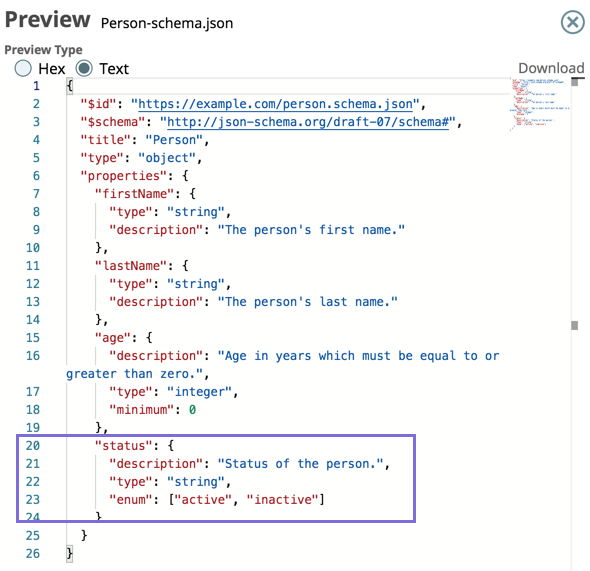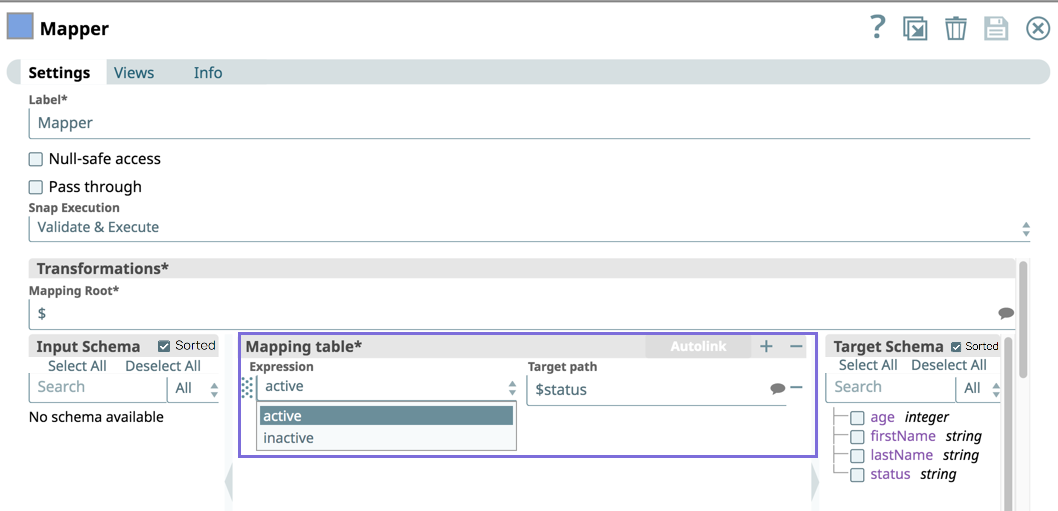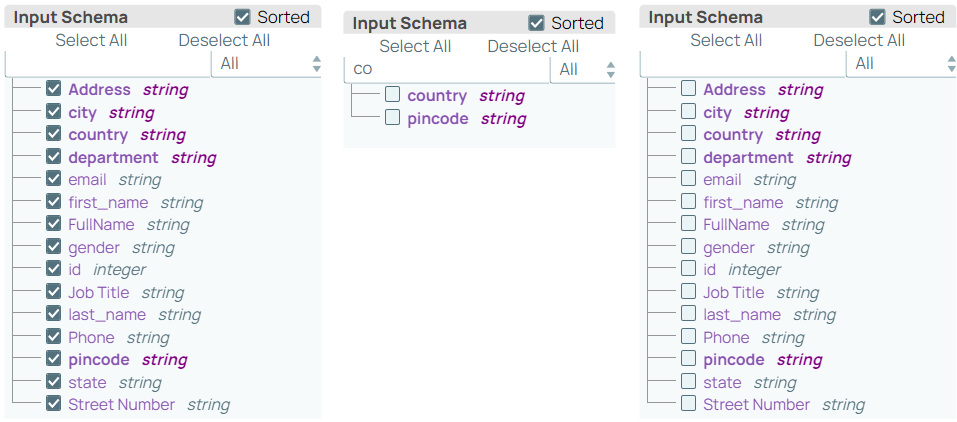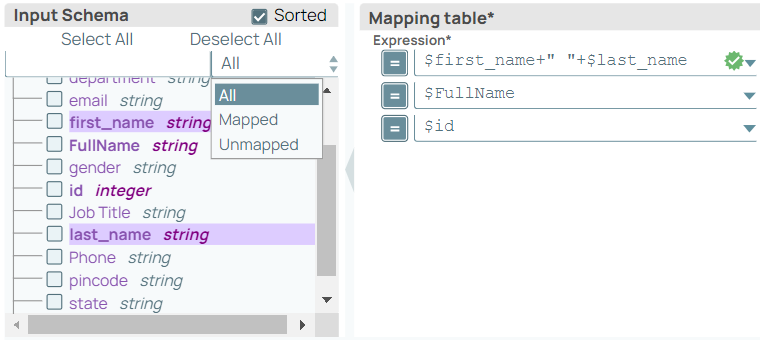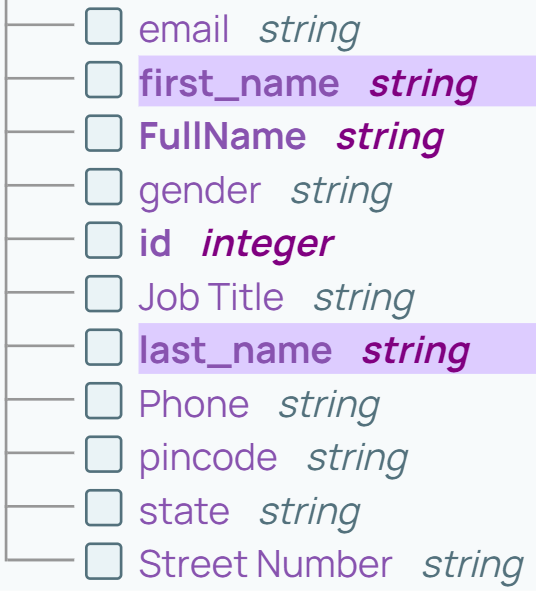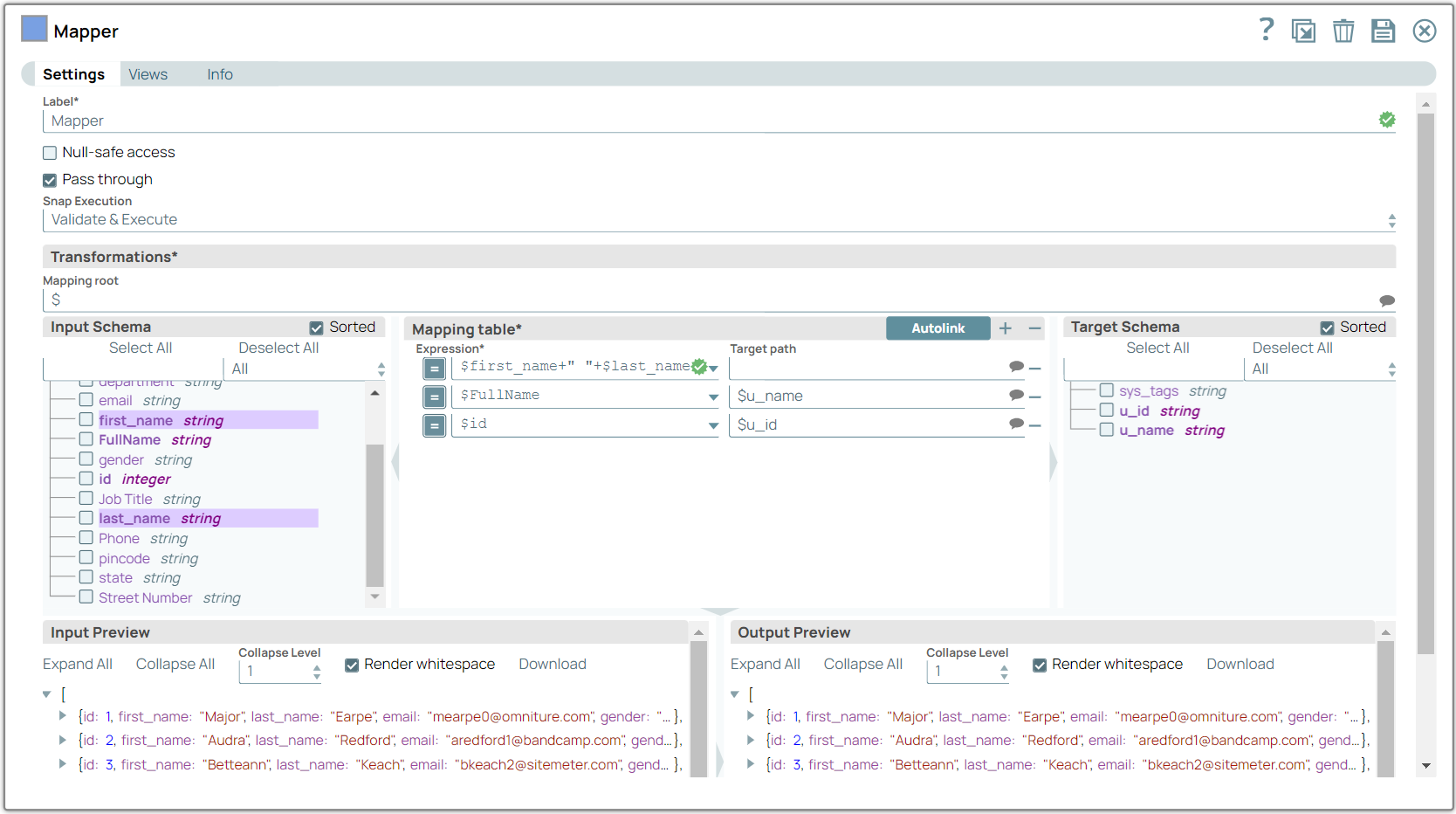Use the Mapping Table
On this Page
Overview
The mapping table in the Mapper Snap enables you to do the following:
- Determine which fields in a schema are mapped or unmapped.
- Create and manage a large mapping table through drag-and-drop.
- Search for specific fields.
When you use the Mapper, ensure the following:
- If an XML schema is exposed in the Target schema column of the Mapper Snap, map the attribute fields before the element fields of the enclosing element field. The mapping ensures that the JSON data from the Mapper Snap is valid for converting to XML.
- If a Copy Snap is placed directly after a Mapper Snap, schema information is not visible in the target schema of the Mapping Table.
Automatically Map Fields
To let the SnapLogic Platform make the best effort at mapping, click AutoLink. Refer to AutoLink for more information. To manually map fields:
- Click to add a row. Drag an element from the Input Schema into the Expression field of the Mapping table to change the input to an expression.
- Drag the appropriate Output Schema field into the target path for the corresponding Input Schema field. If a value already exists, the new value replaces it.
To merge two input fields into one output, select and drag each input field, one at a time, onto one common Expression field. The system combines the two fields into one.
To insert a new line between entries, use the Unicode value of \u000A, as in: $element + "\u000A" + $element
To directly map a field from one schema to the other, click and drag the field from either schema to the other, and the mapping is automatically created. You can also drag fields from the input schema to the target path.
Target Mapping Schema
The schema generated by a downstream Snap populates a list of suggestions for the Expression column. This functionality is useful when the Mapper Snap is followed by Snaps with custom fields, such as the JSON Formatter or NetSuite Snaps.
For example, the following schema contains an enum field with multiple keys: "active" and "inactive".
Toggle off the Expression button in the Expression Builder, then select the field with multiple keys, and a dropdown list of the multiple keys in that field.
Select Multiple Fields in a Schema
You can use any of the following features to select multiple fields in an Input or Target schema:
- Select All: Click this button to select all fields in a schema, including the collapsed children.
- Deselect All: Click this button to deselect all the selected fields in a schema, including the collapsed children.
To select (or deselect) a subset of the schema, search for the key name. Click Select All (or Deselect All). Note that select (or deselect) applies only to fields that match the search terms. - Shift-click: You can also use a keyboard shortcut to select a range of fields. Select the first field in the range, hold down the Shift key, then select the last field in the range. You can also hold down the Shift key and click a plus symbol + in the schema hierarchy to expand that part of the hierarchy.
Use the Mapping Table (Data Preview)
Preview your input and target schemas by clicking the arrow under the mapping table.
The Expression builder preview is driven by the Dynamic Validation option in SnapLogic Designer User Settings.
Non-expression targets (= toggle off) are treated as literal values and do not impact the mapped/unmapped field list.
Search a Schema in Mapper
To search for a specific field in the input or target schema, enter the specific field name in the search field. You can use the file path wildcards * and ? in a search.
Because searches are based on full key names, not just the node title, searches might also select a node's ancestry. For example, if you have a tree such as:
+ Parent
+Child
- Grandchild
Searching for "Parent" returns all three items because the key names are $Parent, $Parent.Child, and $Parent.Child.Grandchild.
Select Multiple Fields in a Schema
You can use these features to select multiple fields in an Input or Target schema:
- Select All: Click this button to select all the fields in a schema, including the collapsed children.
- Deselect All: Click this button to deselect all the selected fields in a schema, including the collapsed children.
To select (or deselect) a subset of the schema, you can search for a key name first, then click Select All or Deselect All. In this case, select and deselect only apply to fields that match the search terms. - Shift-click: Use a keyboard shortcut to select a range of fields. Select the first field in the range, hold down the Shift key, and select the last field. You can also hold down the Shift key and click a plus symbol + in the schema hierarchy to fully expand that part of the hierarchy.
Watch the videos:
Select-All-Deselect-All.mp4
Shift-Click.mp4
View Mapped and Unmapped Fields
To filter whether to see All, Mapped, or Unmapped fields, use the dropdown next to the search field:
When a field is mapped, the field is made bold and highlighted when you view All.
When you drag the data from the input schema into the mapping table, you can use JSONPath expressions to transform the data.
Data Preview
Click the arrow under the mapping table to preview the input and target schemas:
Other Usability Functions
- Collapse the schema views with the gray arrows in the header row for a larger Expression and Target path columns.
- Click the down arrow in an expression field to access the expression editor, functions and properties, and the upstream schema. Click the bubble in the Target path field to access the downstream schema suggestions.
- Rearrange the rows in the mapping table by:
- Highlighting the left side, clicking, and dragging.
- Mousing over a row until a selection arrow appears, then dragging it to a new location.
Watch the video: Move.mp4
- Highlighting the left side, clicking, and dragging.
Have feedback? Email documentation@snaplogic.com | Ask a question in the SnapLogic Community
© 2017-2025 SnapLogic, Inc.

